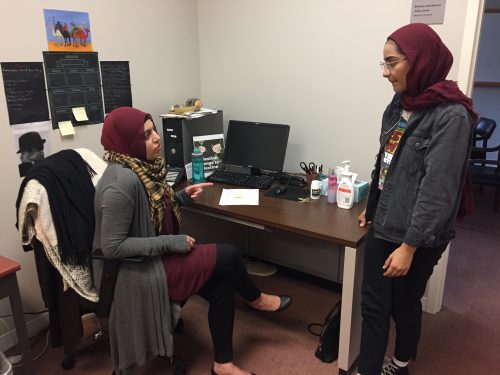
BY ELIZABETH RICHTER
A surprising new exhibit has just opened at the Chicago History Museum, surprising in that it has accomplished something few museums are willing to undertake: mounting a major exhibition on a subject which has not up to now been part of its collection. American Medina: Stories of Muslim Chicago, the museum’s first exhibit on Chicago Muslims, follows in the tradition of earlier exhibits on Chicago’s storied religious communities: Catholic Chicago (2008) and Shalom Chicago (2012) on Chicago’s Jewish community.
For Chief Historian and Curator Peter Alter, the concept presented a challenge uniquely appropriate to his role as Director of the Studs Terkel Center for Oral History. “Our goal is to build our collection with the exhibit structured around oral histories from the region’s significantly diverse Muslim communities,” he explained. “Visitors can listen to more than 40 personal stories reflecting the region’s Muslim identity, journey, and faith, enhanced with a rich collection of over 80 objects loaned by the communities represented.”
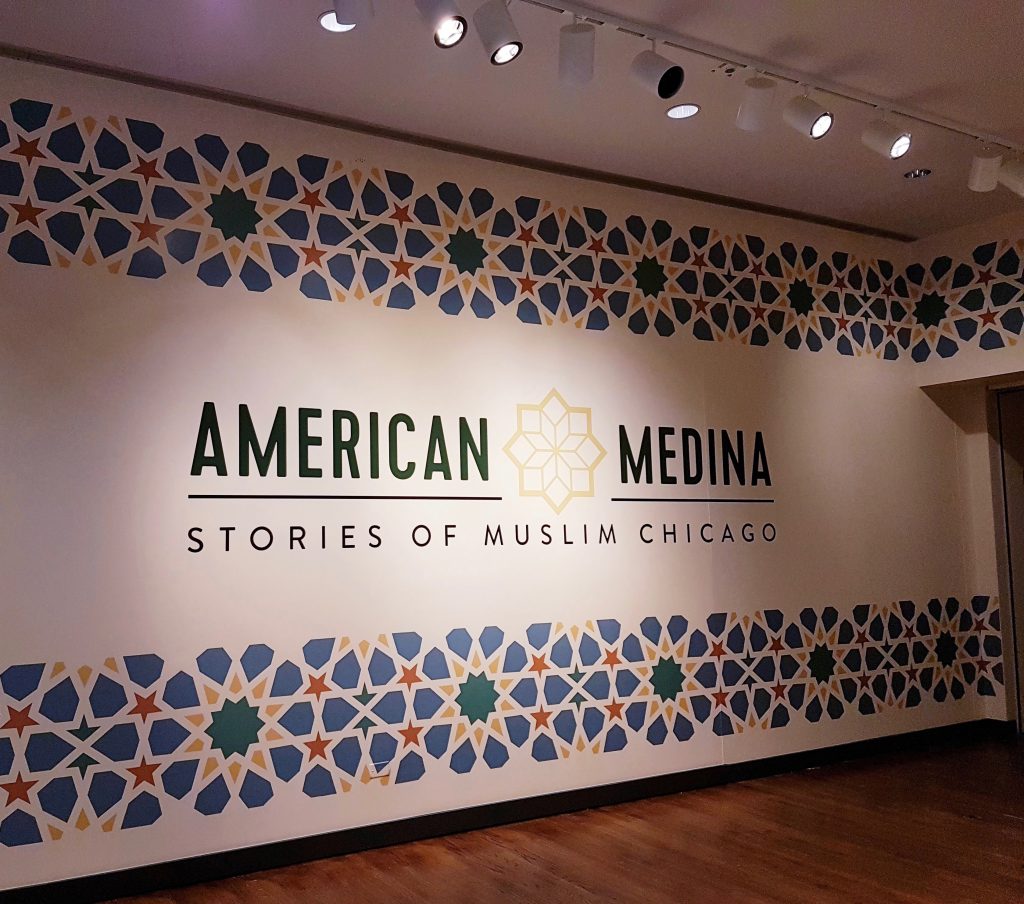
Photo Credit: Chicago History Museum
Over 130 oral histories were collected, and those not included in the exhibit will be available to the public in an online archive. Muslim communities in the suburbs as well as the city have participated. In addition to the staff and volunteers who interviewed such diverse people as a Syrian refugee family, a Rhodes scholar, and a dress designer, a special cadre of Muslim teenagers was recruited to learn the art of taking oral histories and engage with their own communities. Curatorial Assistant Mona Askar recruited an eager team, including Amatullah Mir, now a freshman at the University of Chicago. “ You don’t hear about us [Muslims] very often in a thoughtful way,” she mused. “We’re not a monolith; we come in all shapes and sizes.”
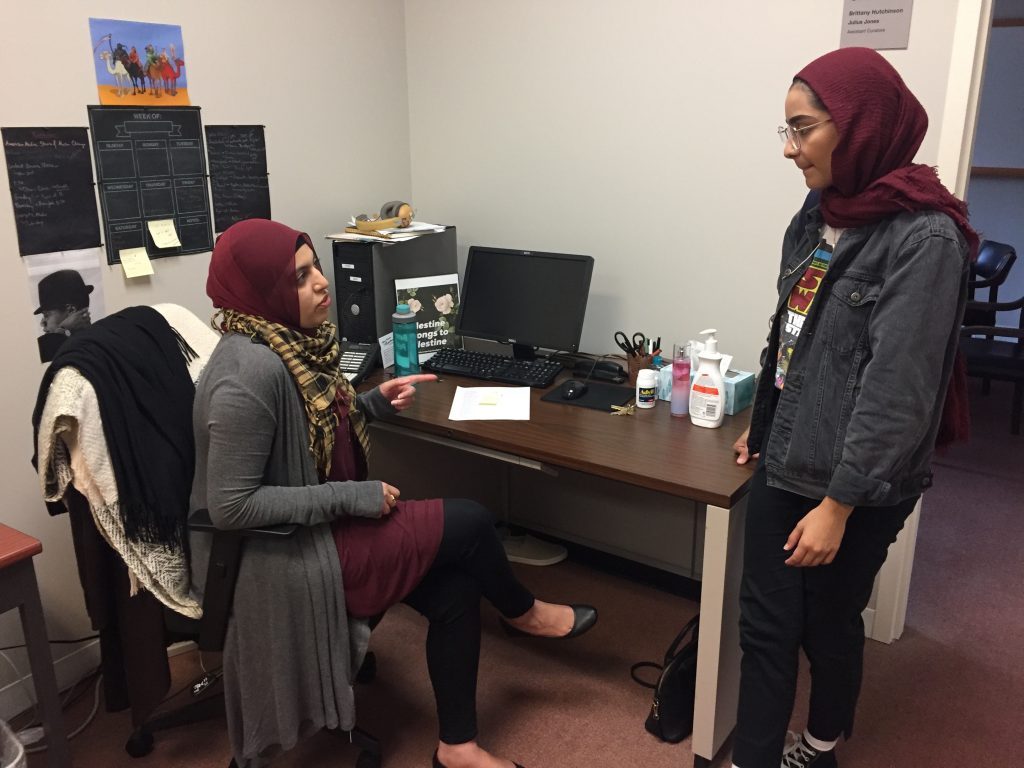
Mona Askar (left), with Amatullah Mir.
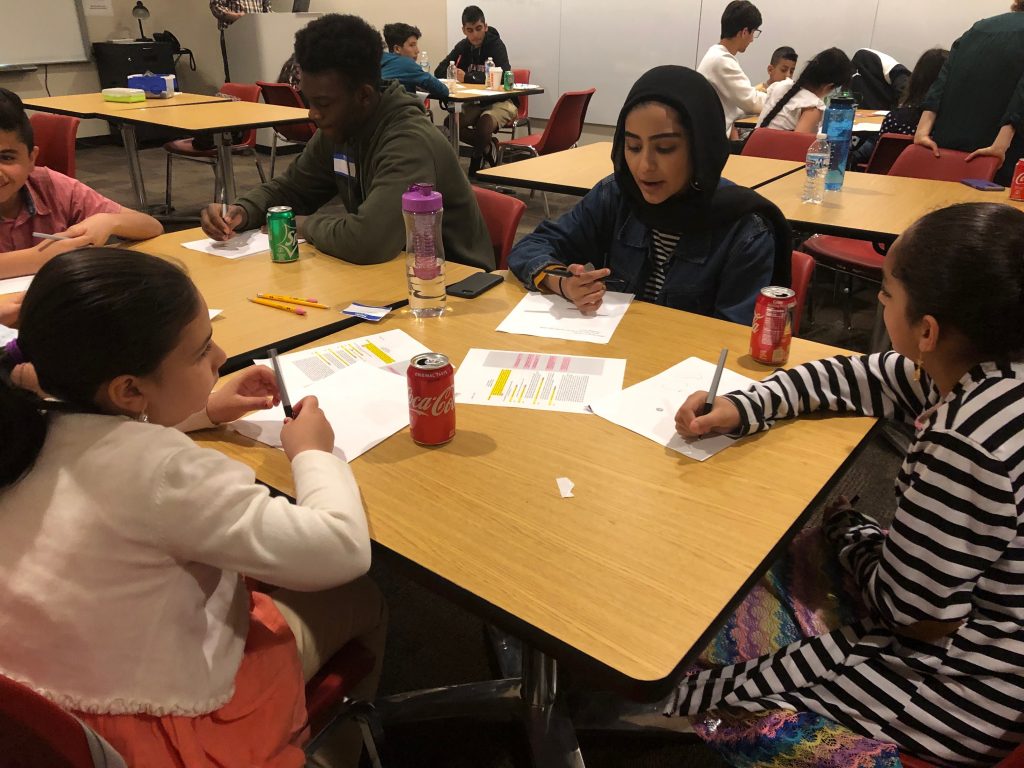
Photo Credit: Chicago History MuseumTeen Historians with Syrian refugee youth of the Karam Foundation.
For Askar, the biggest challenge was interesting various communities in cooperating with the exhibit. “One of the first contacts I made was very hesitant and even suspicious of documenting their personal stories,” she recalled. “Many people, particularly Muslims living in the suburbs, are not familiar with the Museum. In some countries, museums are government-run, and governments are not trusted.” Fortunately, Mona was able to use a personal contact to open the door and collaboration became easy once initial relationships were established.
Interviews are integrated into the exhibit through listening stations with speakers embedded in the roofs. Adjacent interactive screens permit visitors to see images related to the interviews.

Exhibit Curator Peter Alter checks listening station under construction.
The title of the show, American Medina, captures the symbolic importance of the Chicago area as home for thousands of Muslims (estimates range from 300,000 to 500,000), comparable to the historic city of Medina in modern day Saudi Arabia. The first mosque in the U.S. was built in Chicago by the Ottoman Empire as part of the 1893 World’s Columbian Exposition.

Photo Credit: Chicago History MuseumTurkish Mosque, 1893 Columbian Exposition.
Today’s vibrant and varied Muslim community has been generous in loaning personal objects to the museum, including posters, photographs, documents, clothing, architectural fragments, and religious artifacts. The Museum hopes that some of these will eventually be donated to create a Muslim collection for the Museum. Skilled Museum specialists carefully prepared each item for display in the exhibit.
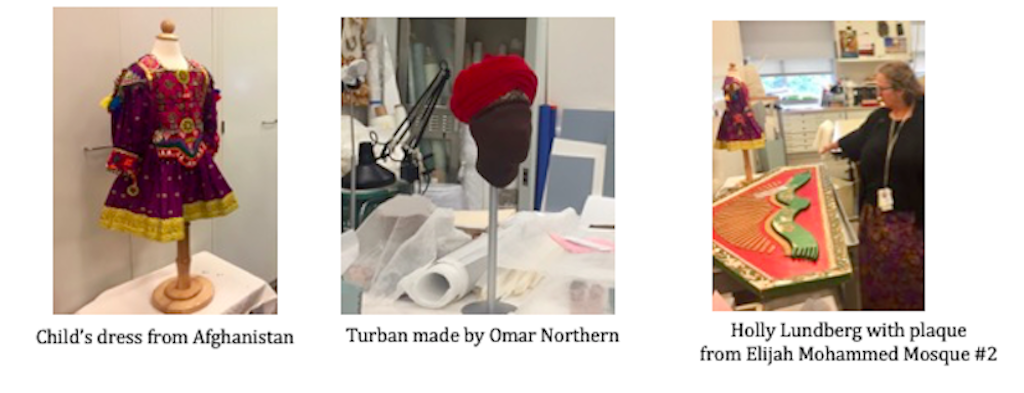
American Medina does not ignore the ugly fact of Islamophobia. Particularly since 9/11, Muslims have endured insults and worse. One section of the exhibit deals with the challenges such behavior forces Muslims to face. The adjacent exhibit focuses on faith and the teachings of the Quran. The space provides an area for dialog and contemplation.

Photo Credit: Chicago History Museum
The big idea of the exhibit is that Chicago has attracted Muslims for over 125 years, people of many national origins and lifestyles. Although not detailing the myriad differences among sects, the exhibit touches on both historic and current Muslim communities. A 1906 photograph documents the Bosnian Benevolent Society established to aid and support immigrants. A young girl’s beautifully embroidered dress from Afghanistan is worn on special occasions today. In addition to native Chicagoans, Muslims in Chicago represent every corner of the world from Europe, the Middle East and South Asia to the Balkans and Africa. One of the area’s largest Muslim populations is from Nigeria.
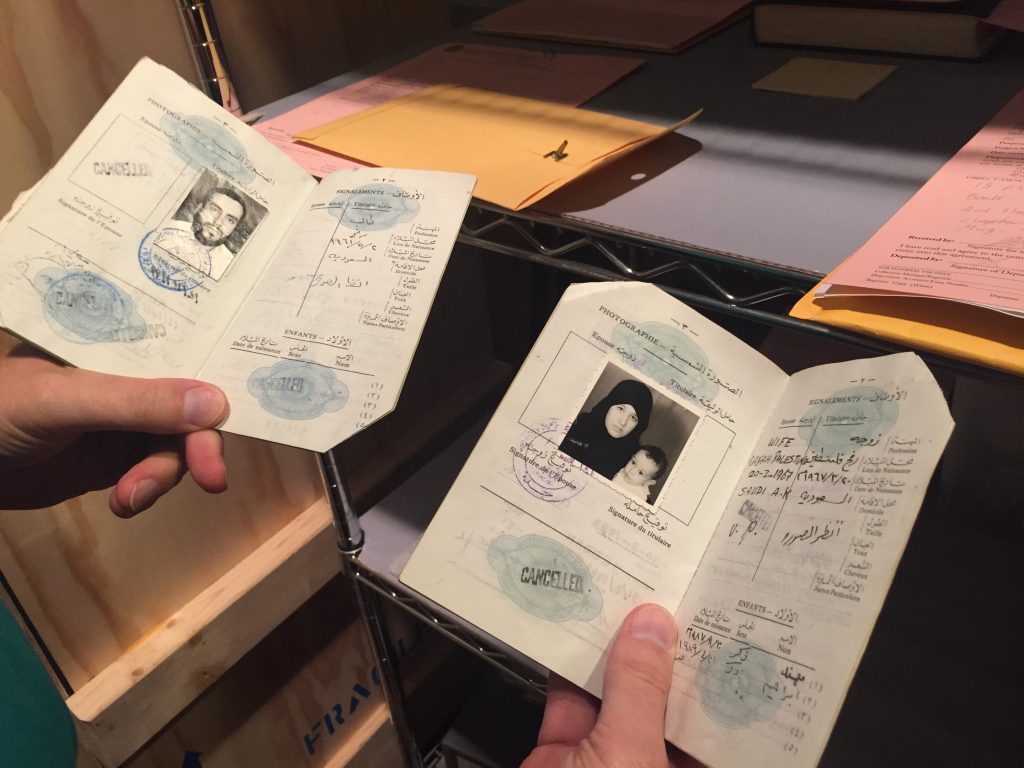
Photo Credit: Chicago History Museum
Over 34 team members at the Chicago History Museum plus outside contractors have together spent over three years conceiving, curating, interviewing, collecting, designing, preparing, writing, building and sharing the story of Chicago Muslims. Their journeys, their traditions, their suffering and their triumphs are all here. The Museum hopes visitors will leave appreciating, above all, the significant contributions that Muslims have made and are making to Chicago and its suburbs.



